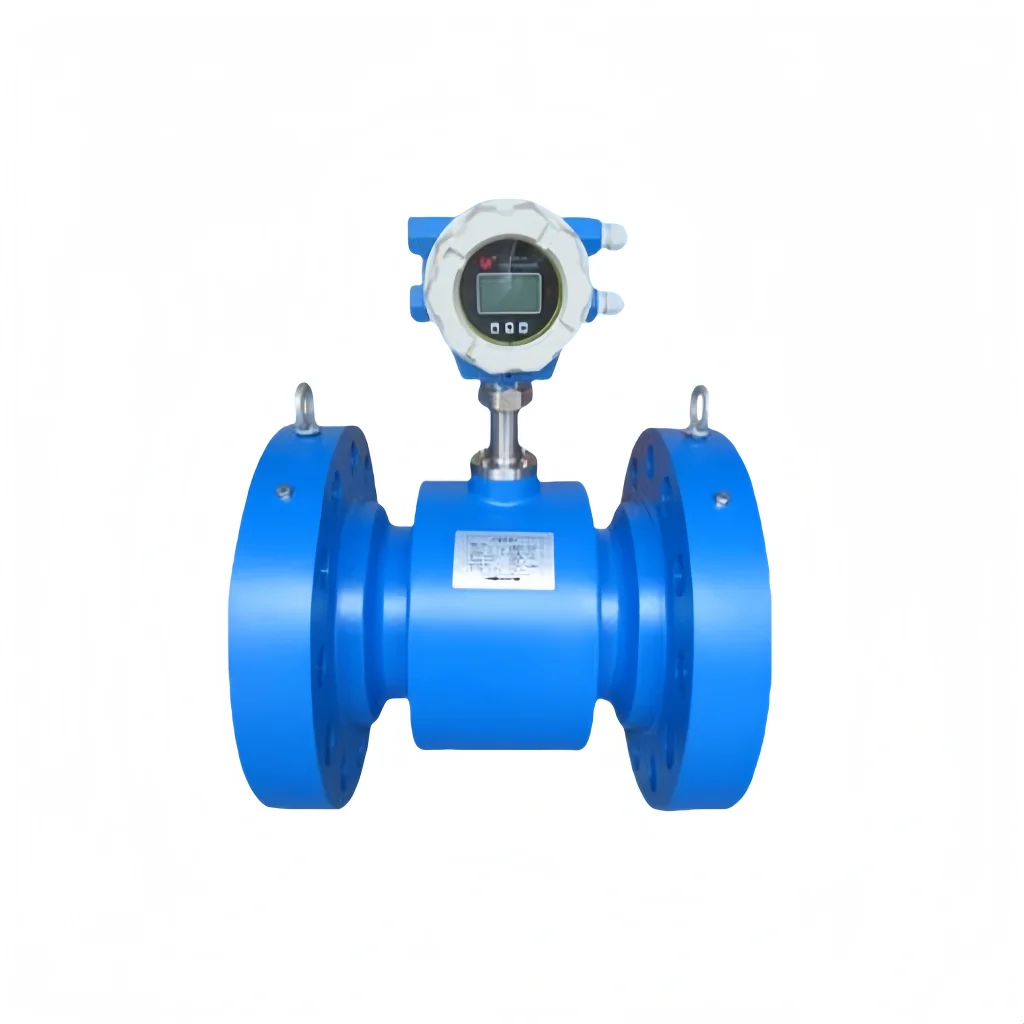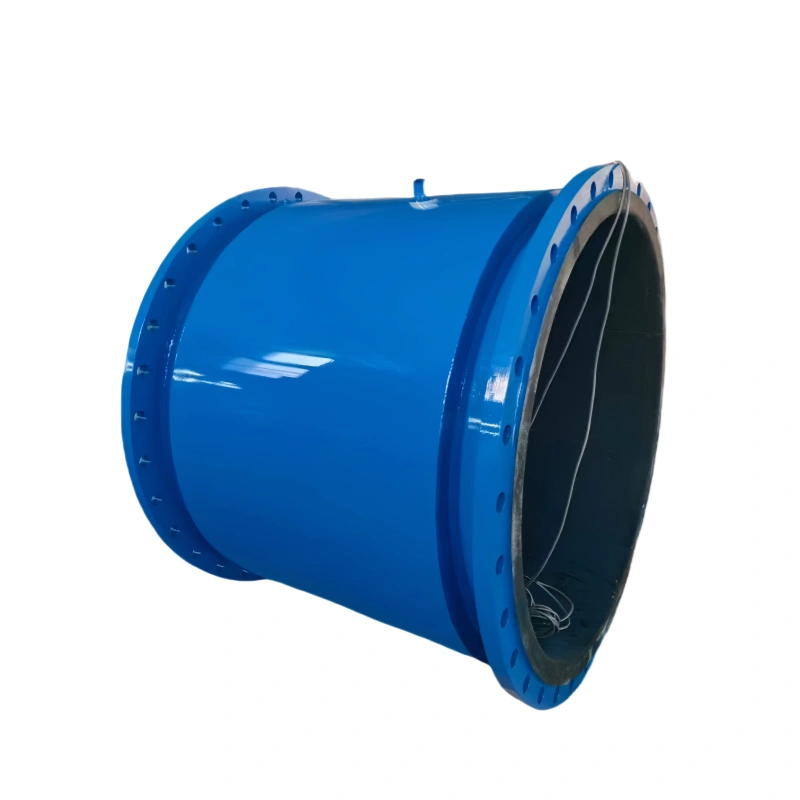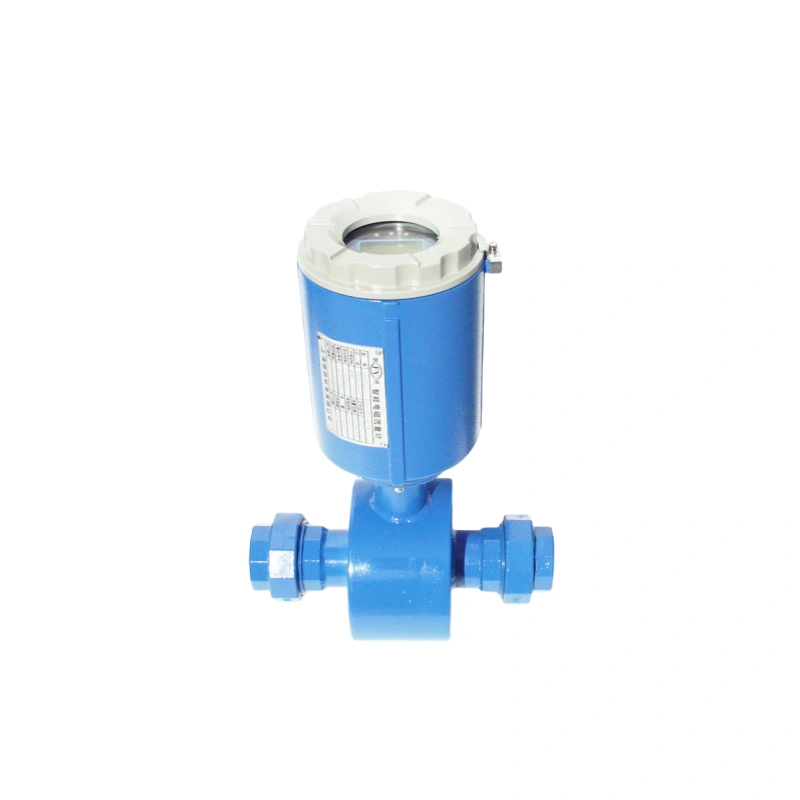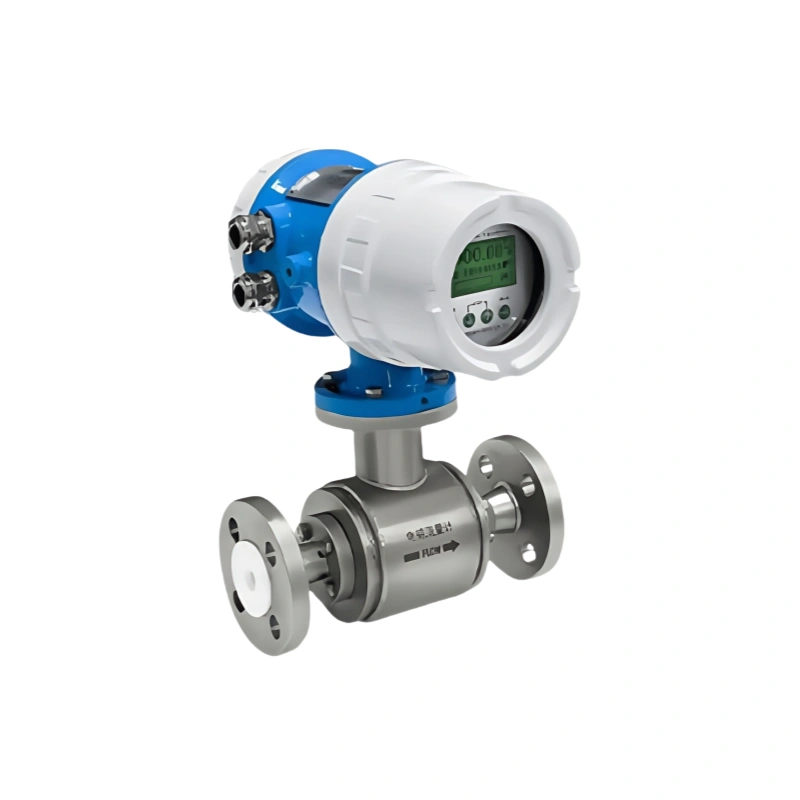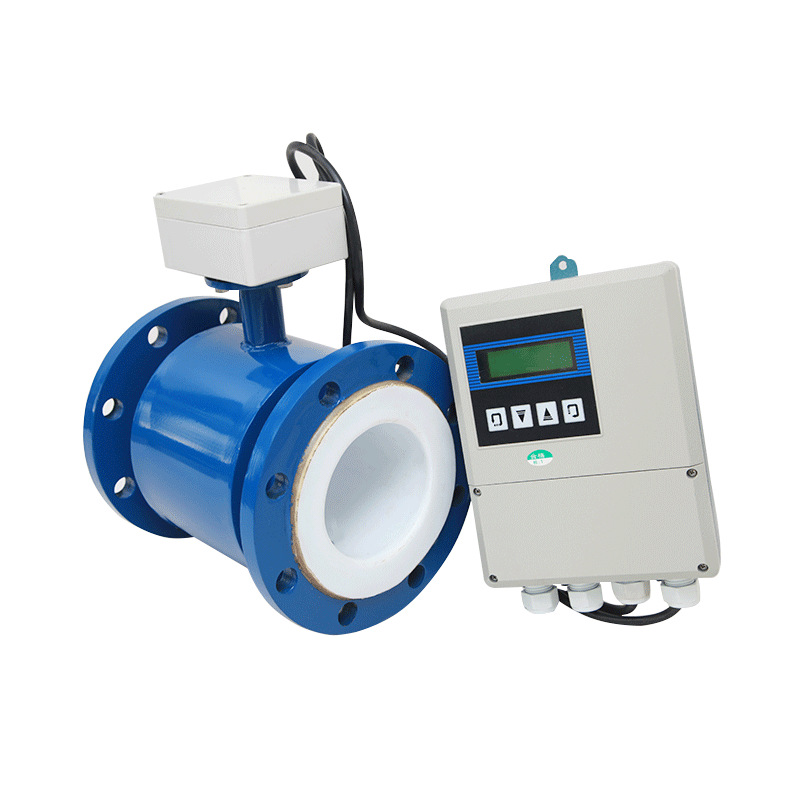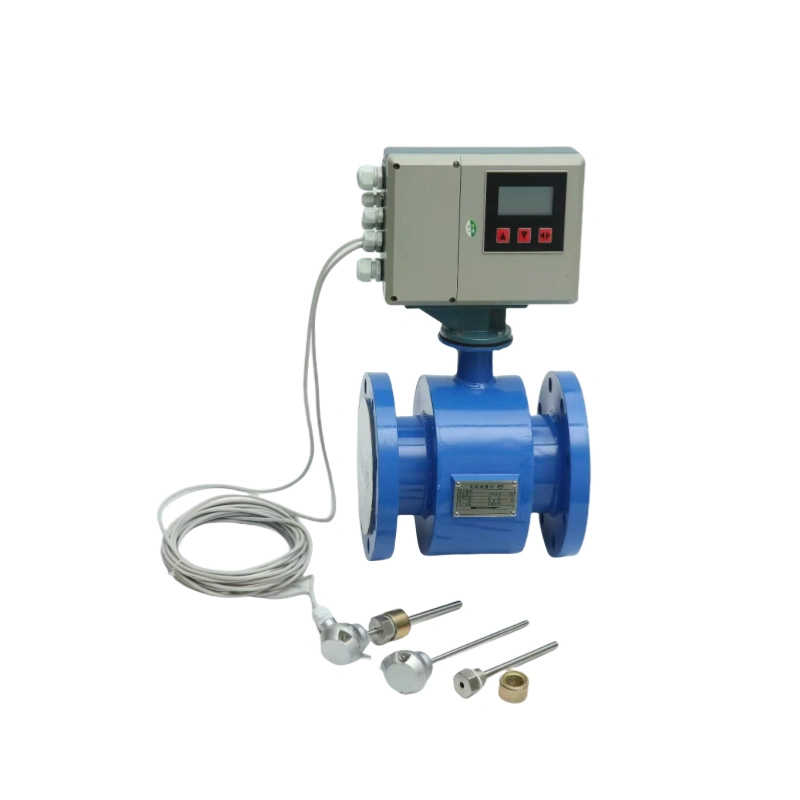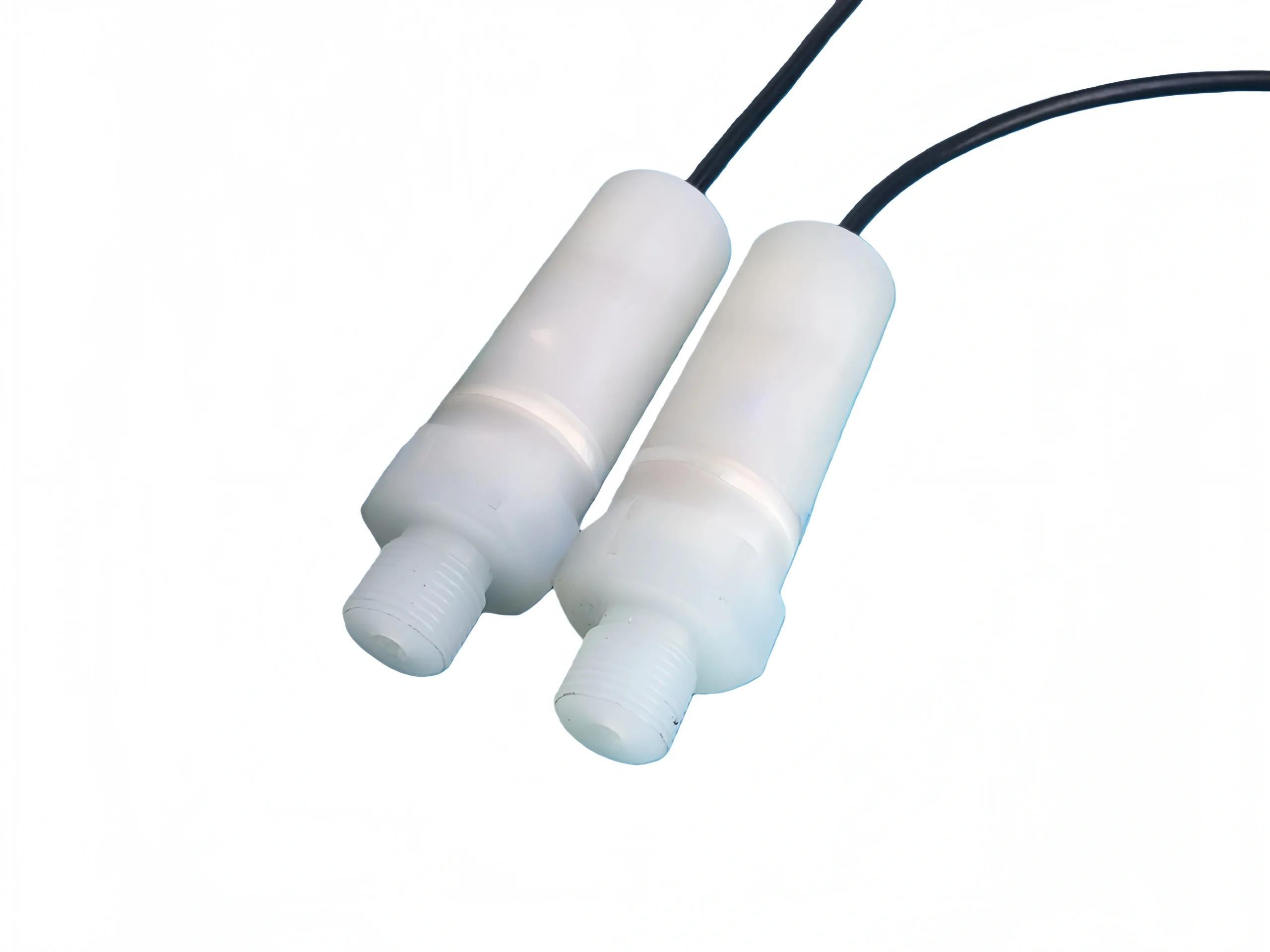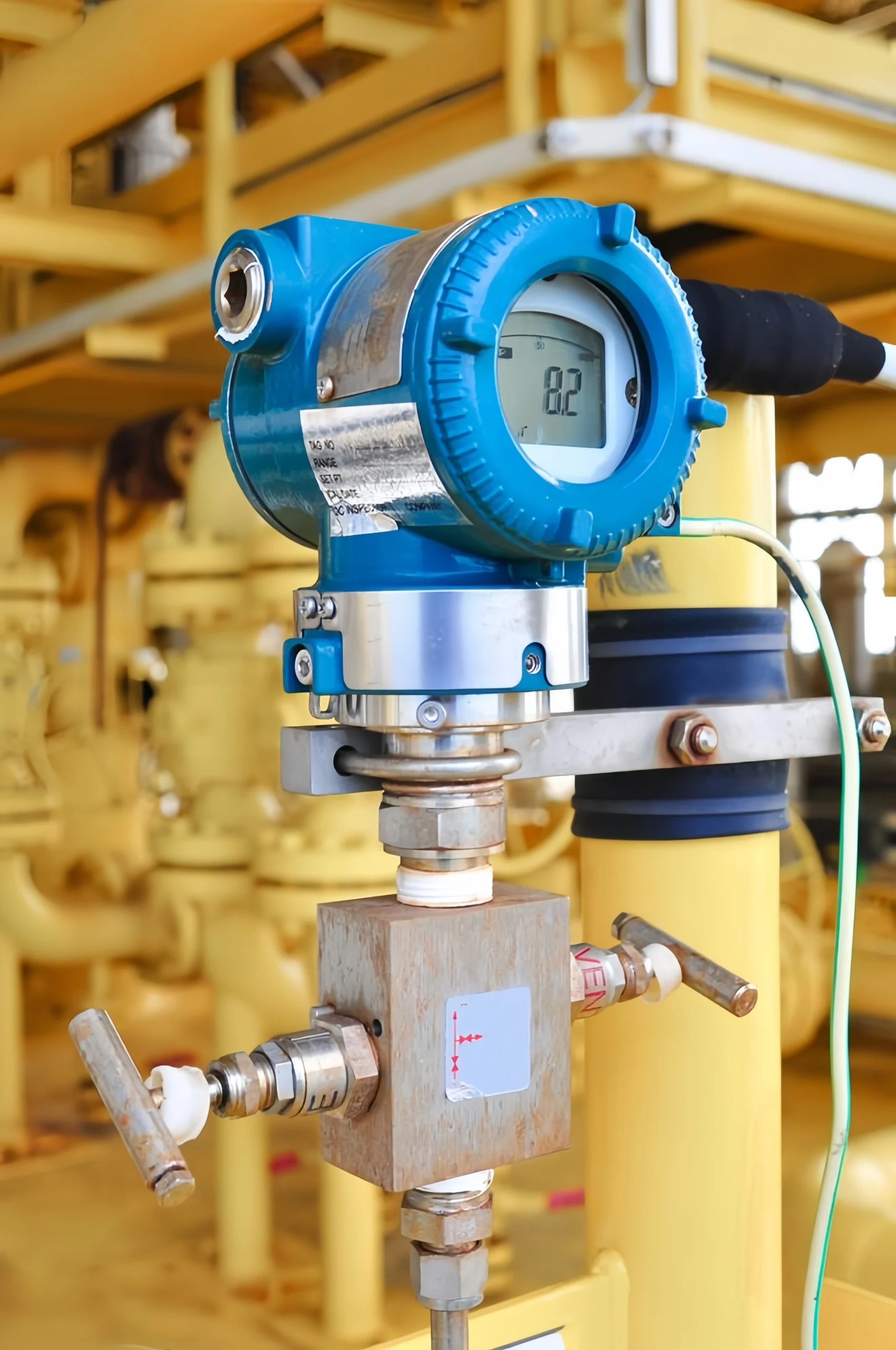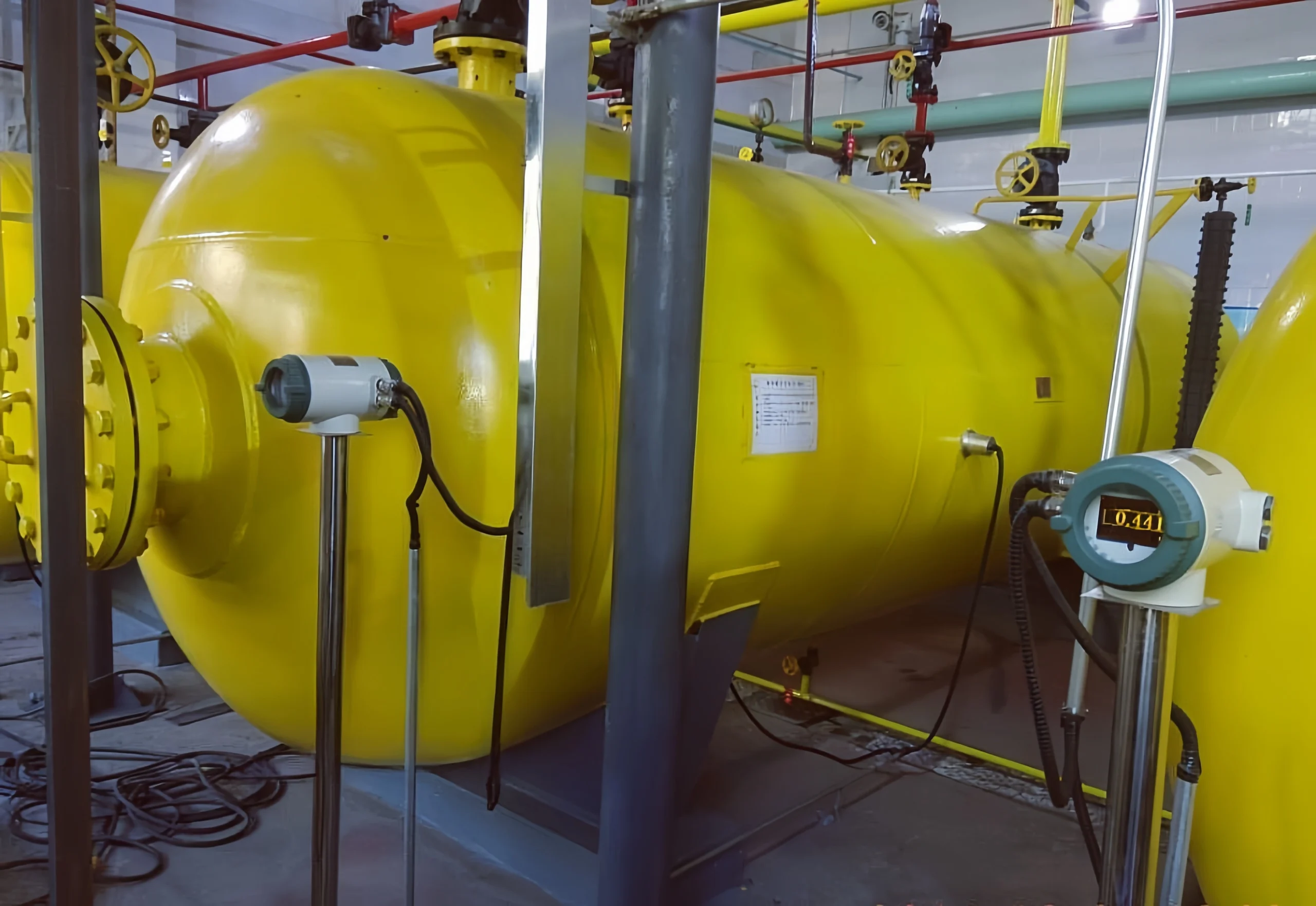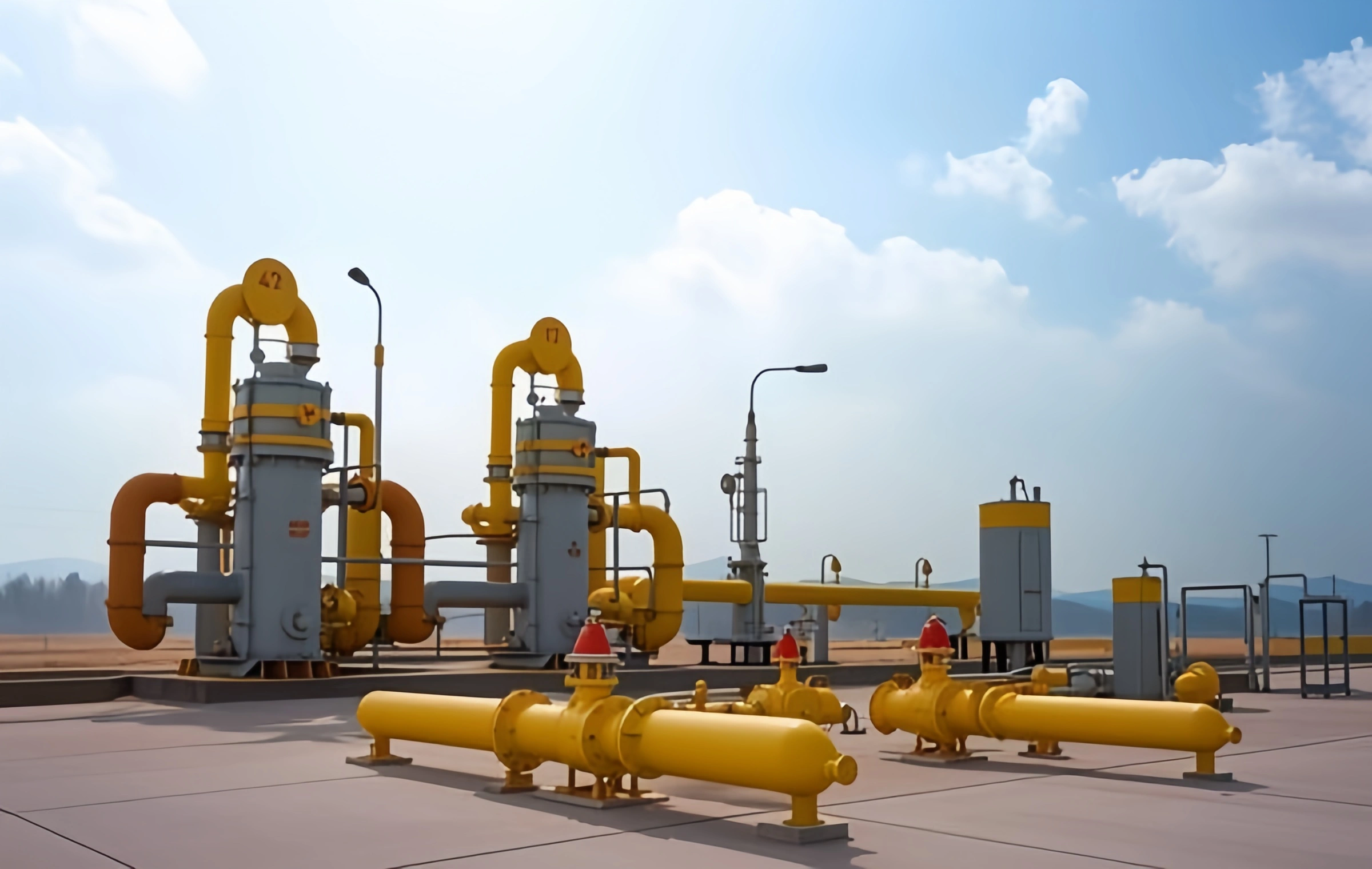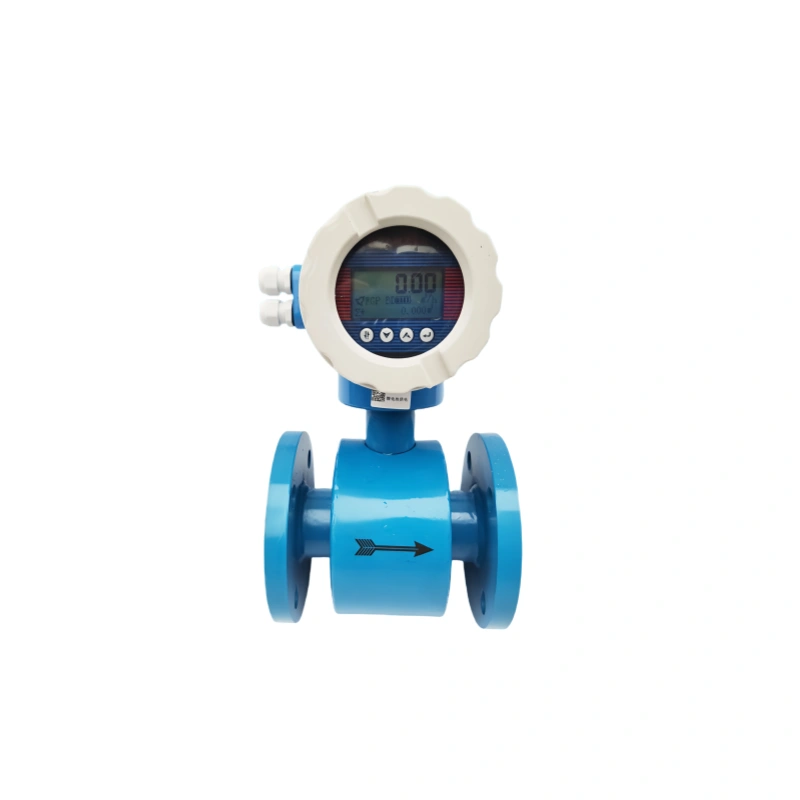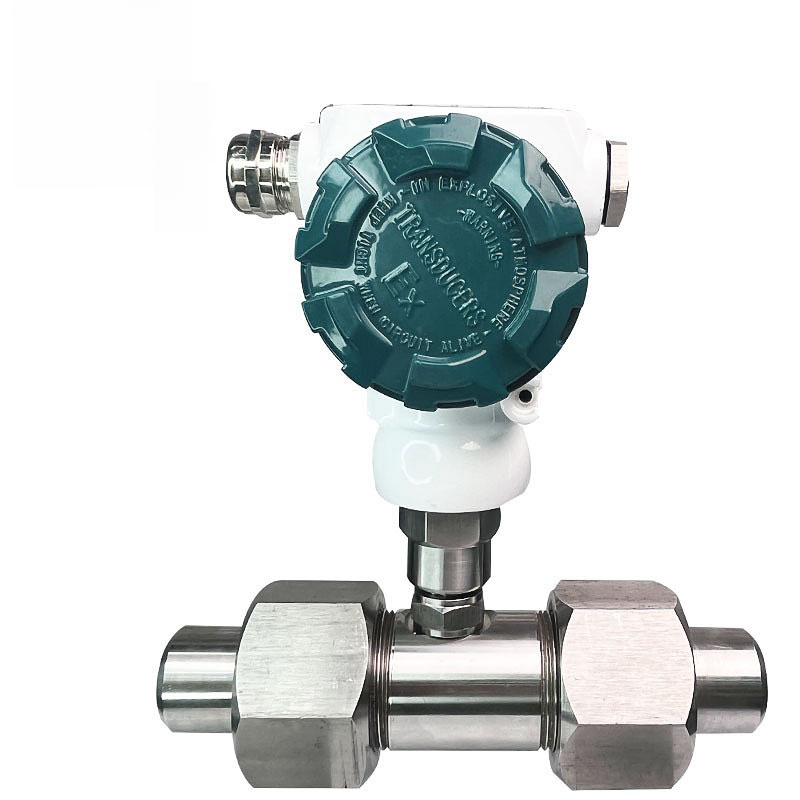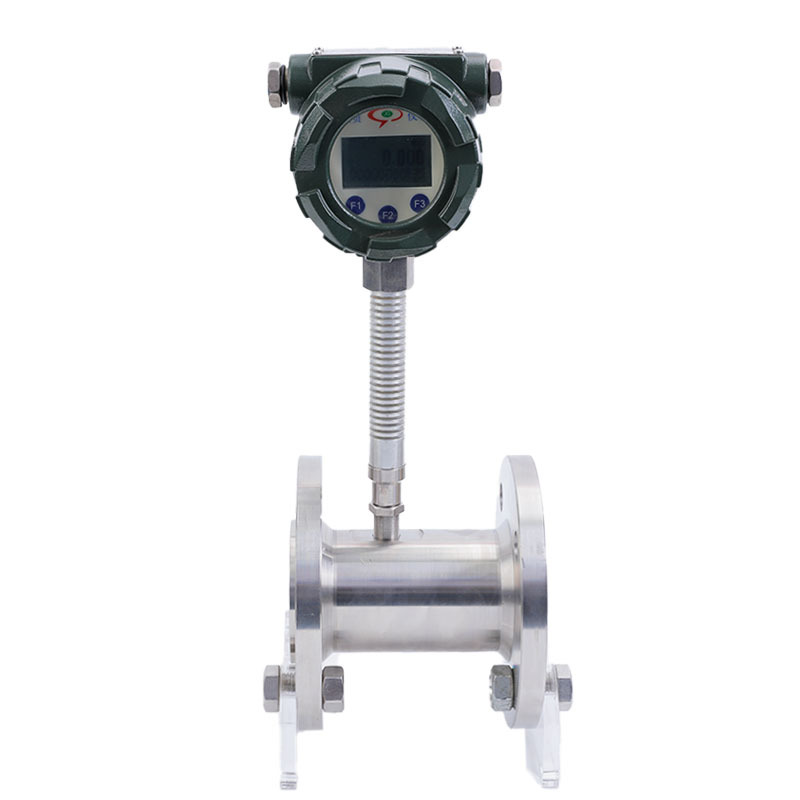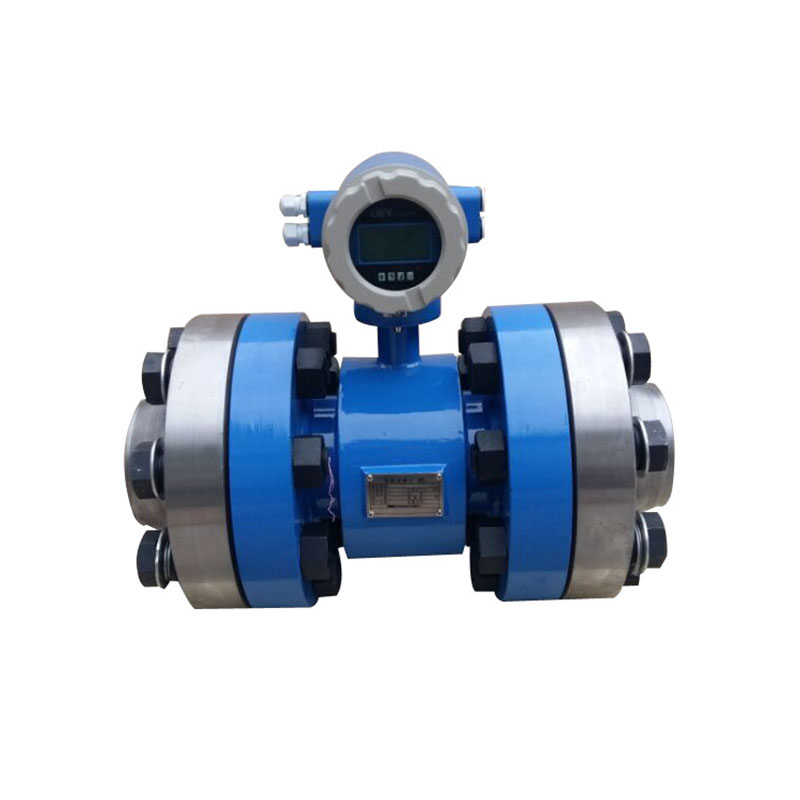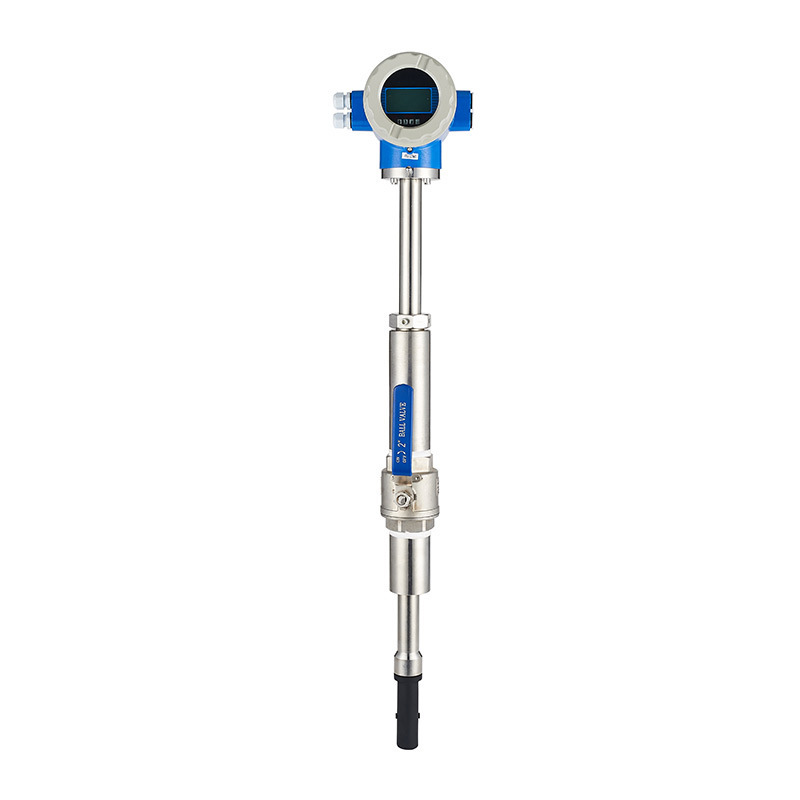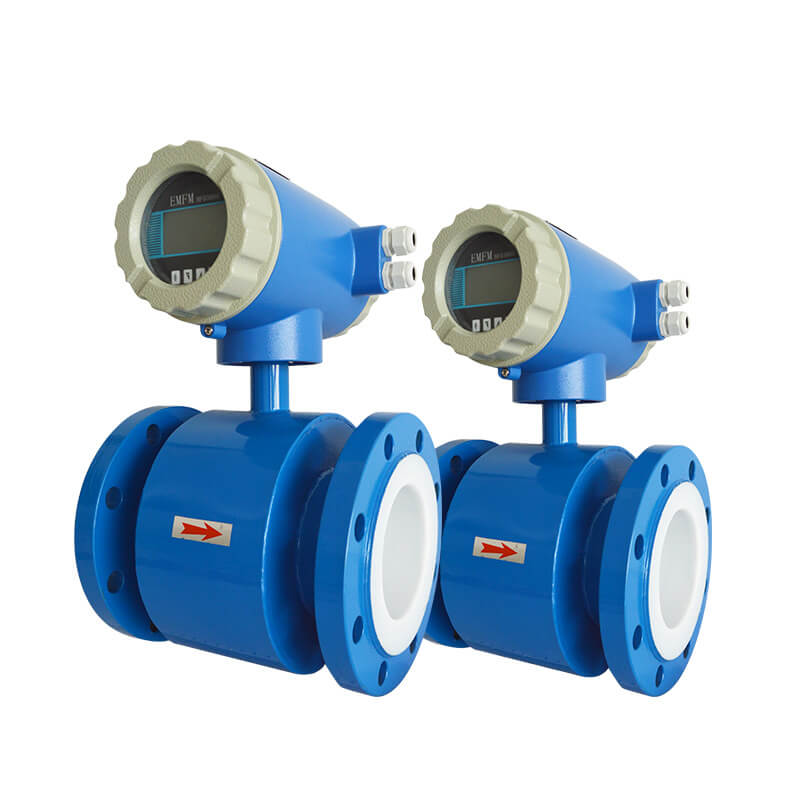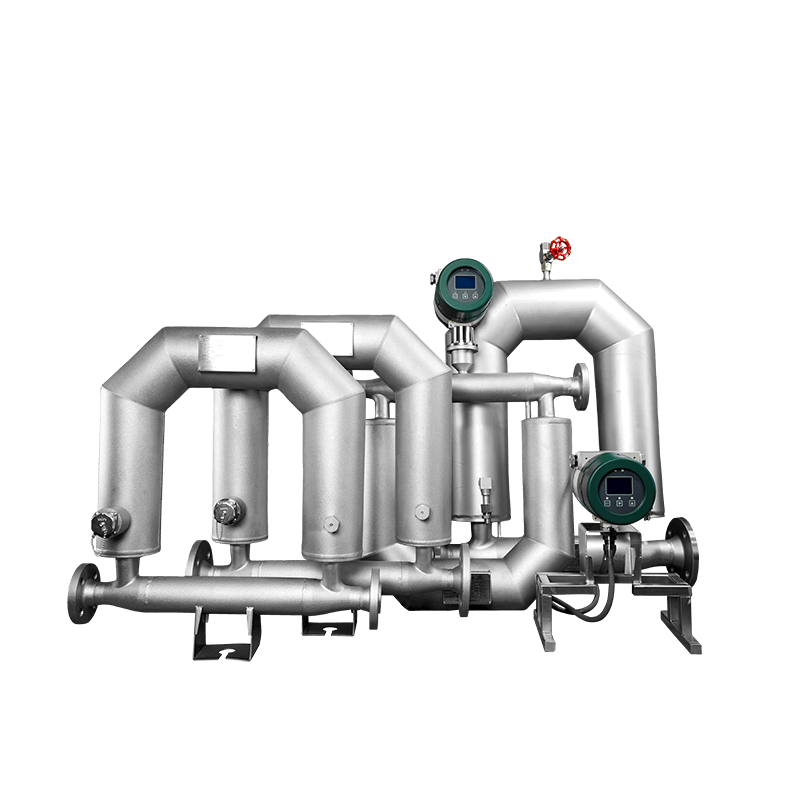After purchasing a magnetic flow meter, the first question for users is how to install it. As a measuring instrument, the installation location and method of the magnetic flow meter are crucial. Correct installation ensures accurate and stable measurement results. This article will provide a detailed introduction to the relevant issues of flow meter installation.
Sino-Inst Featured Products
What are the Installation Environment Requirements for Magnetic Flow Meters?
a. The flow meter should not be installed in places where the temperature changes greatly or is exposed to high temperature radiation from the equipment. If it must be installed, insulation and ventilation measures must be taken.
b. The flow meter is best installed indoors. If it must be installed outdoors, it should be avoided from rain, water accumulation and sun exposure. Moisture and sun protection measures must be taken.
c. The flow meter should not be installed in an environment containing corrosive gases. If it must be installed, ventilation measures must be taken.
d. To facilitate installation, maintenance, there must be ample installation space around the flow meter.
e. The flow meter installation site should avoid strong magnetic fields and strong vibration sources. If the pipeline vibrates greatly, there should be supports on both sides of the flow meter to fix the pipeline.
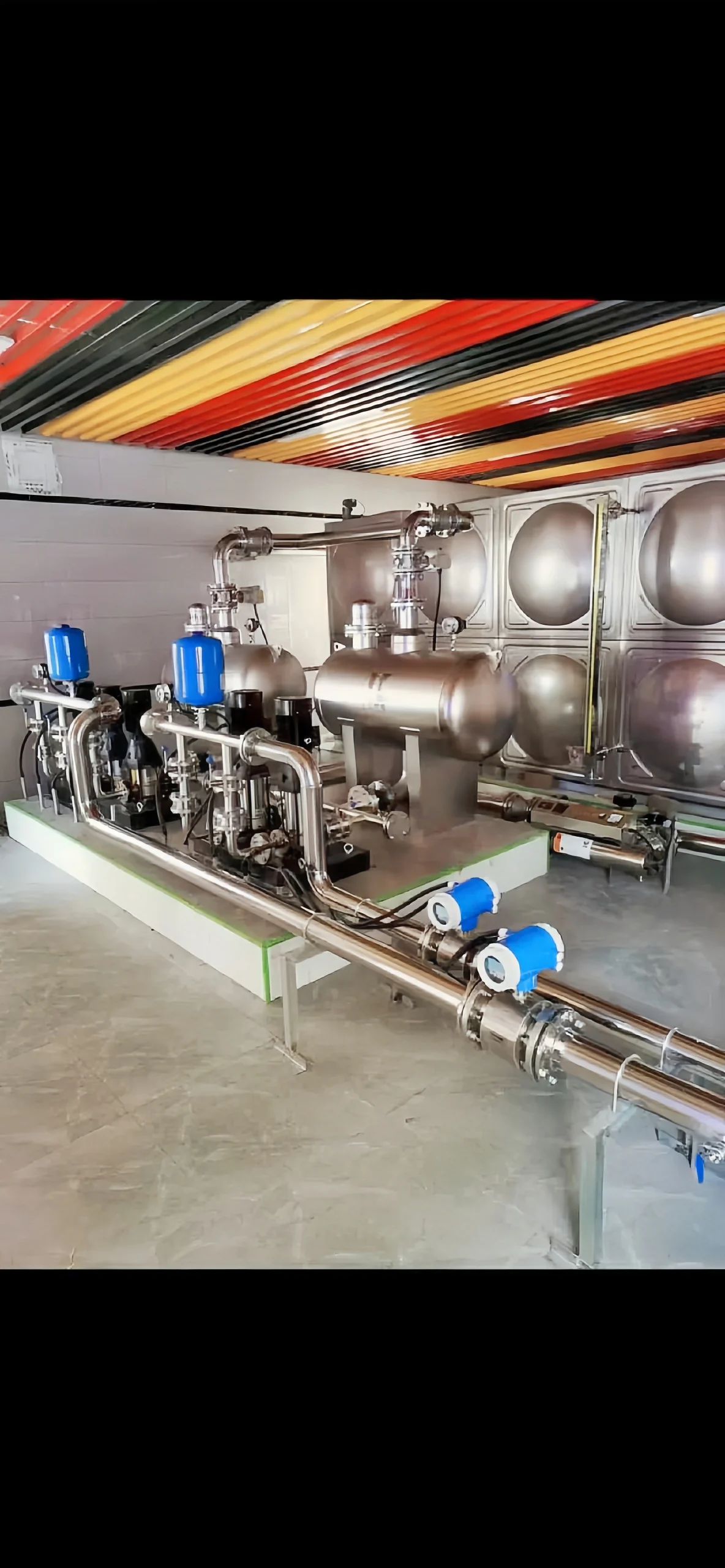
What are the Straight Run Requirements for Magnetic Flow Meters?
To improve the influence of eddy current and flow field distortion. The length of the straight pipe section before and after the flow meter is installed. Otherwise, it will affect the measurement accuracy (rectifiers can also be installed. Try to avoid installing them near the regulating valve and half-open valve).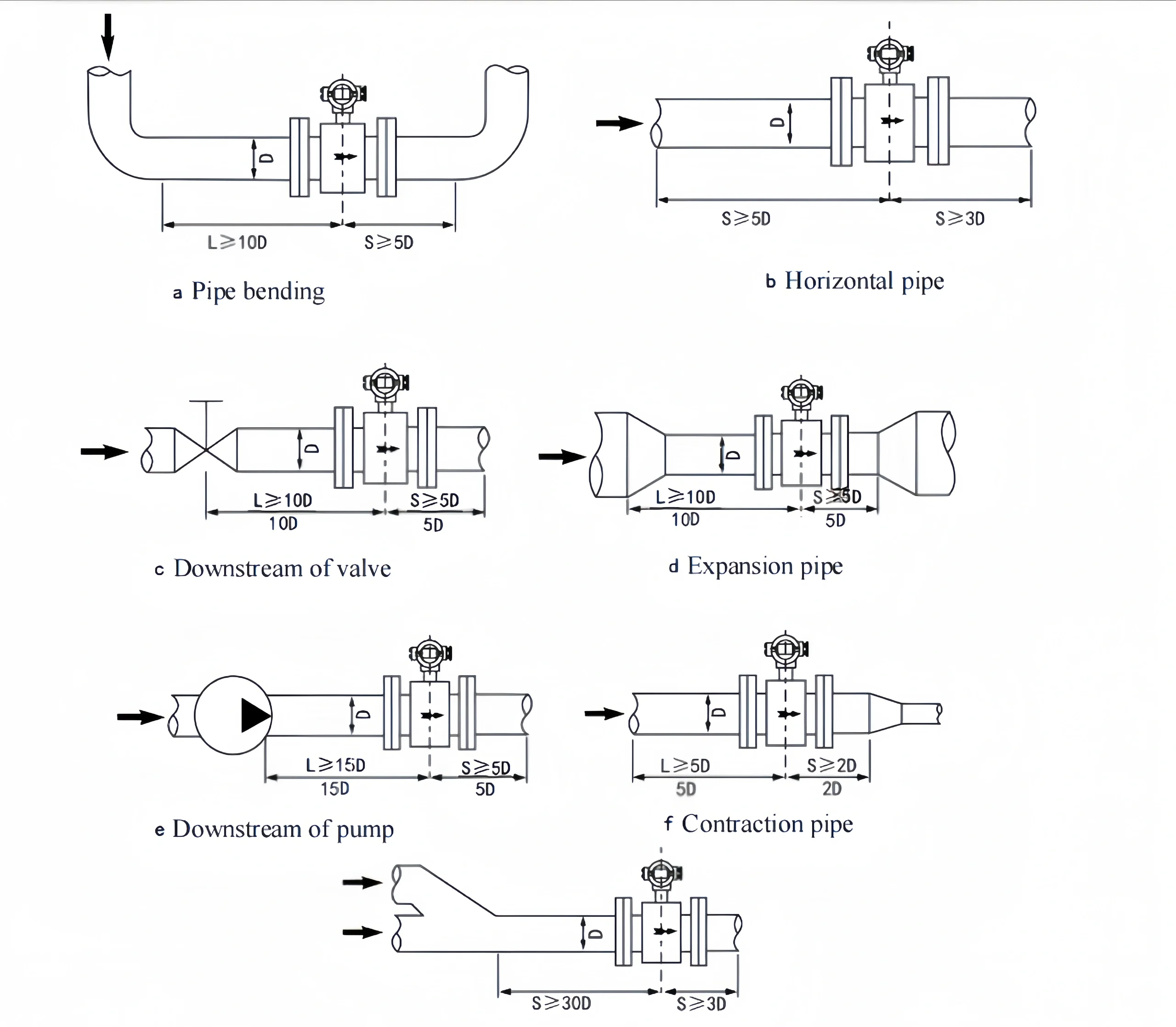
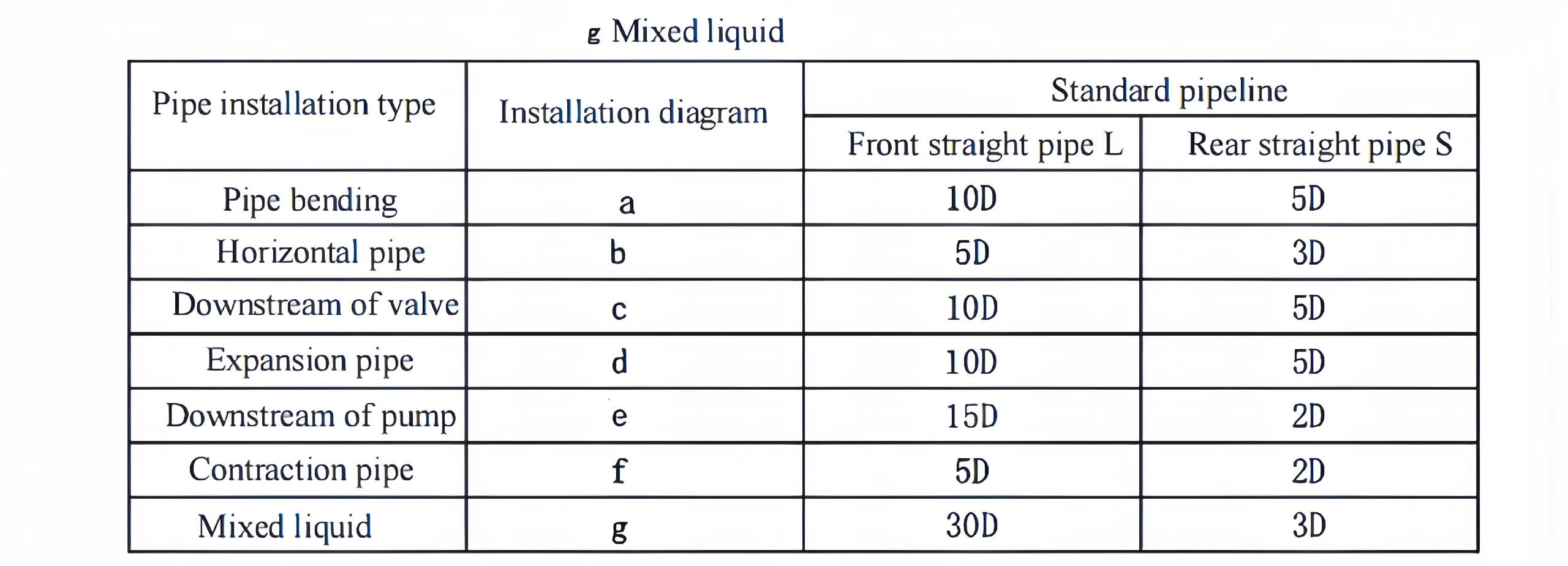
Requirements for Process Pipes
The flow meter has certain requirements for the upstream and downstream process pipes of the installation point. Otherwise, it will affect the measurement accuracy.
a. The inner diameter of the upstream and downstream process pipes is the same as the inner diameter of the sensor. And it should meet: 0.98 DN≤D≤1.05 DN
where:
DN: sensor inner diameter,
D: process pipe inner diameter)
b. The process pipe and the sensor must be concentric, and the coaxial deviation should not exceed 0.05DN.
What are Bypass Pipes Requirements of Magnetic Flow Meter?
In order to facilitate the maintenance of the flow meter, it is best to install a bypass pipe for the flow. In addition, for heavily polluted fluids and flow meters that need to be cleaned and the fluid cannot be stopped. A bypass pipe must be installed.

Magnetic Flow meter Installation Requirements on Pipelines
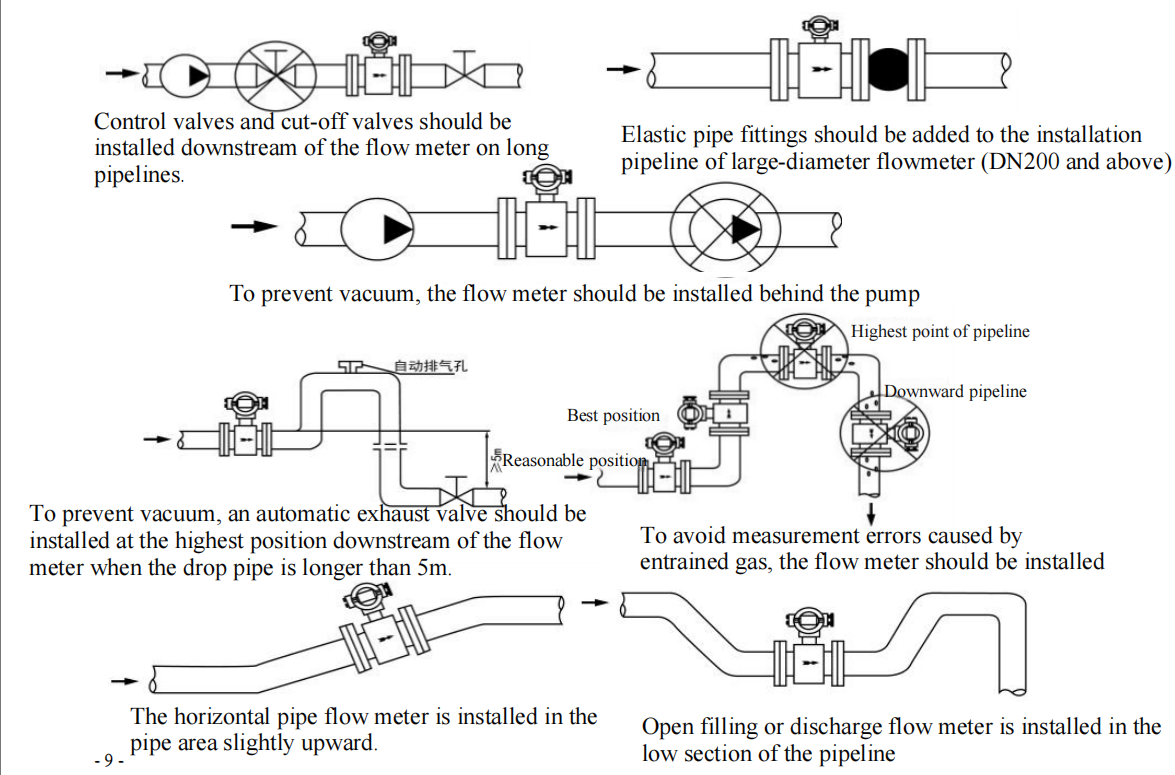

Sensor grounding
To make the instrument work reliably. The sensor should have a good separate grounding wire with a grounding resistance of <10Ω. If the pipe connected to the sensor is coated with an insulating layer or is a non-metallic pipe, grounding rings or built-in grounding electrodes should be installed on both sides of the sensor.
a. Grounding method on metal pipes: There is no insulating layer in the metal pipe, so ground it according to the figure below.
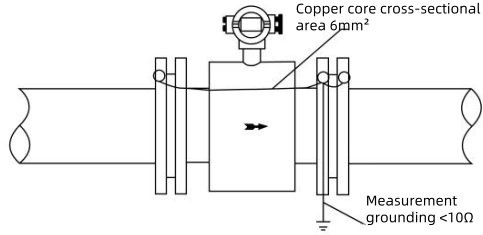
Installation of the sensor on a metal pipe (without insulation layer on the inner wall)
b. Grounding method on plastic pipes or pipes with insulating layers or paint:
Grounding rings or built-in grounding electrodes should be installed on both ends of the sensor. The measured medium flowing in the pipe is short-circuited to the earth and has zero potential. Otherwise, the electromagnetic flow meter cannot work properly.
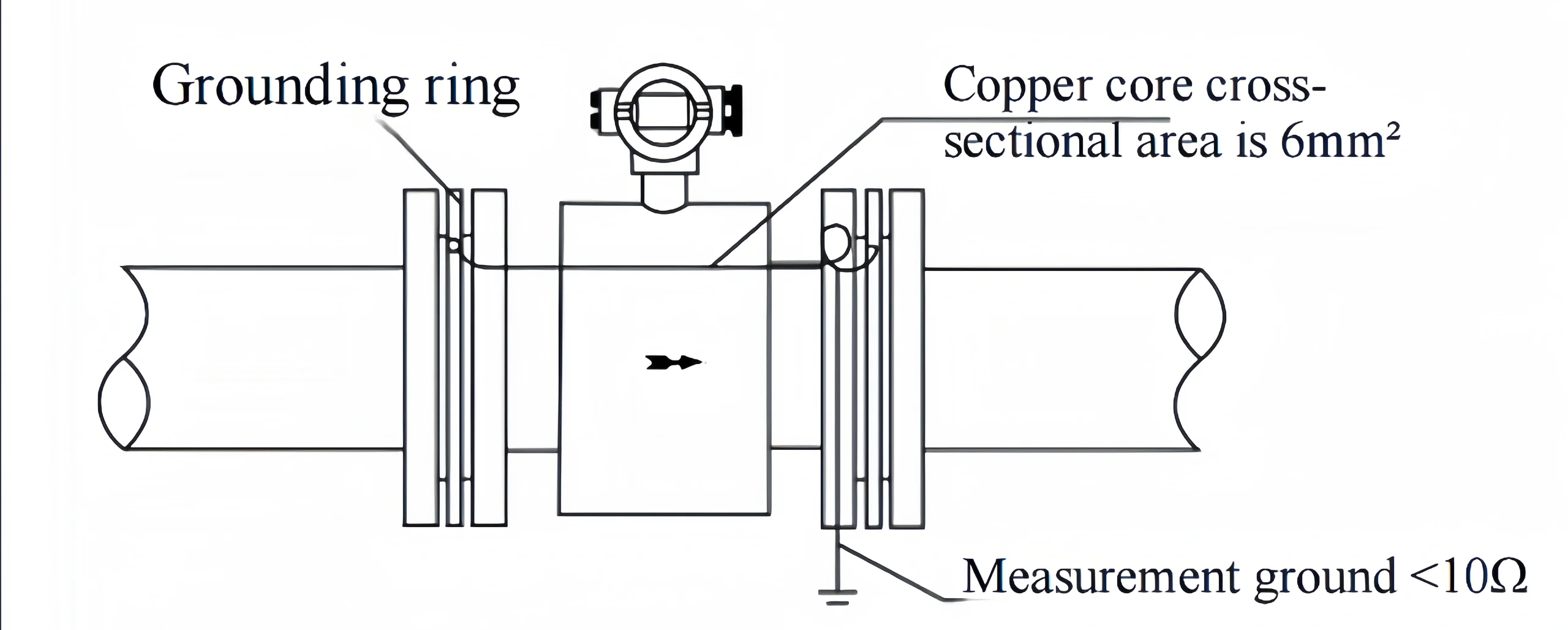
Installation of sensors on plastic pipes or pipes with insulation, oil and gas pipelines
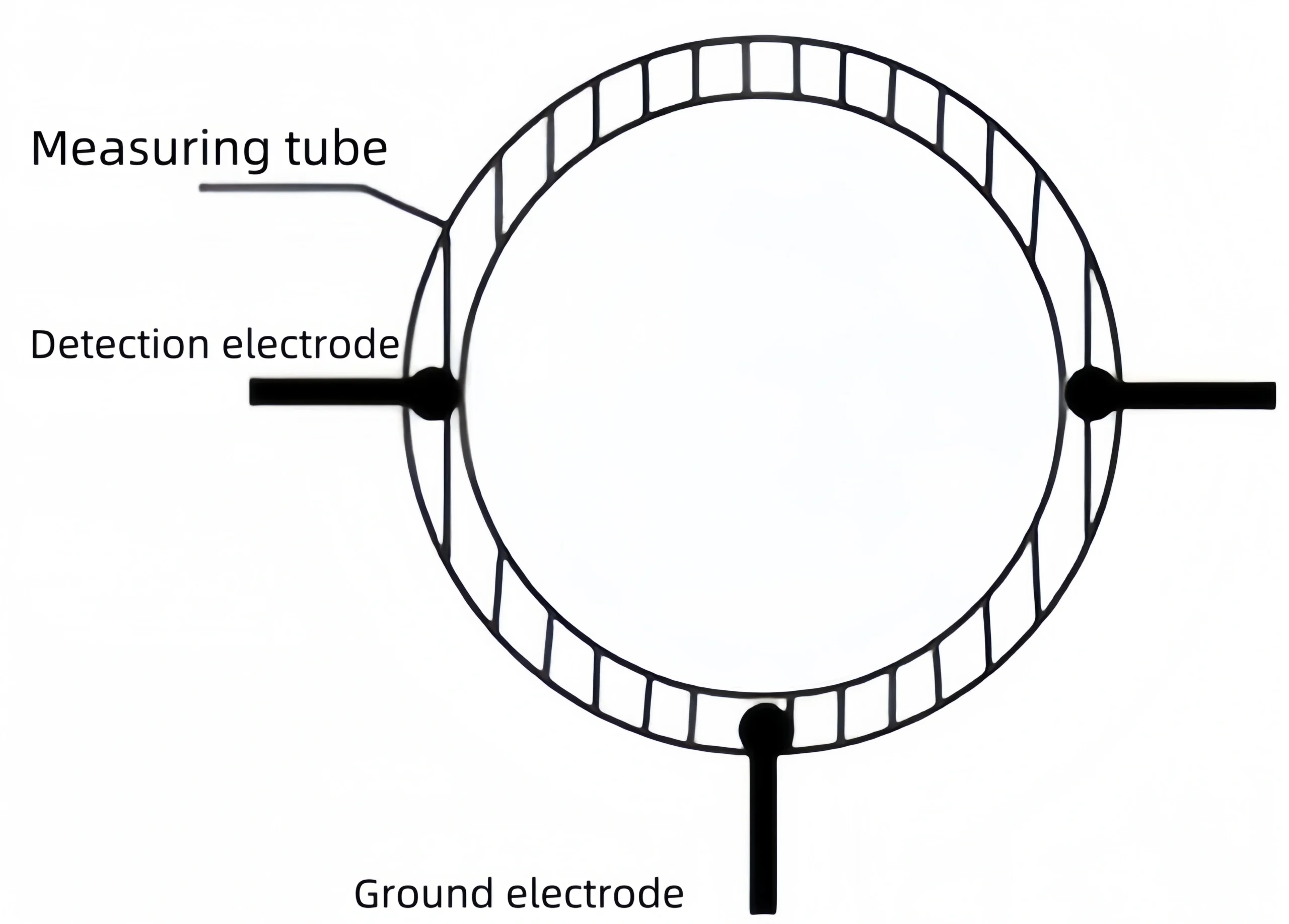
Note: If there is a grounding electrode in the sensor, there is no need to add a grounding ring. The function of the grounding electrode is the same as that of the grounding ring.
Sensor Installation on Cathodic Protection Pipes
Pipes that protect against electrolytic corrosion are usually insulated on their inner and outer walls because the measured medium has no ground potential. Therefore, the sensor must use a grounding ring or a built-in grounding electrode.
For pipelines with cathodic corrosion protection, the sensor and the connecting pipes on both sides are usually insulated. So, the medium is not conductive to the ground. Pay attention to the following points during installation:
a. The grounding rings should be installed on the two end faces of the sensor. They must be insulated from the flanges of the process pipeline and connected to the sensor through the grounding wire 2. The material of the grounding ring should be resistant to the corrosion of the medium. The standard material usually provided by the manufacturer is stainless steel (1Crl8Ni9Ti).
b. The flanges of the process pipes on both sides of the instrument should be connected to the sensor with a copper wire with a cross-sectional area of 4mm² to bypass the sensor. So that the cathodic protection potential is isolated from the sensor. It must be noted that it should not be connected to the sensor.
c. The flange connection bolts must be insulated from the flanges of the process pipeline. The user must prepare bushings and gaskets made of insulating materials. See the schematic diagram below for details.

- Measurement grounding <10Ω
- The cross-sectional area of the grounding wire copper core is 6mm²
- Grounding ring
- The bolts should be insulated from the flange during installation
- The cross-sectional area of the connecting wire, copper core is >4mm²
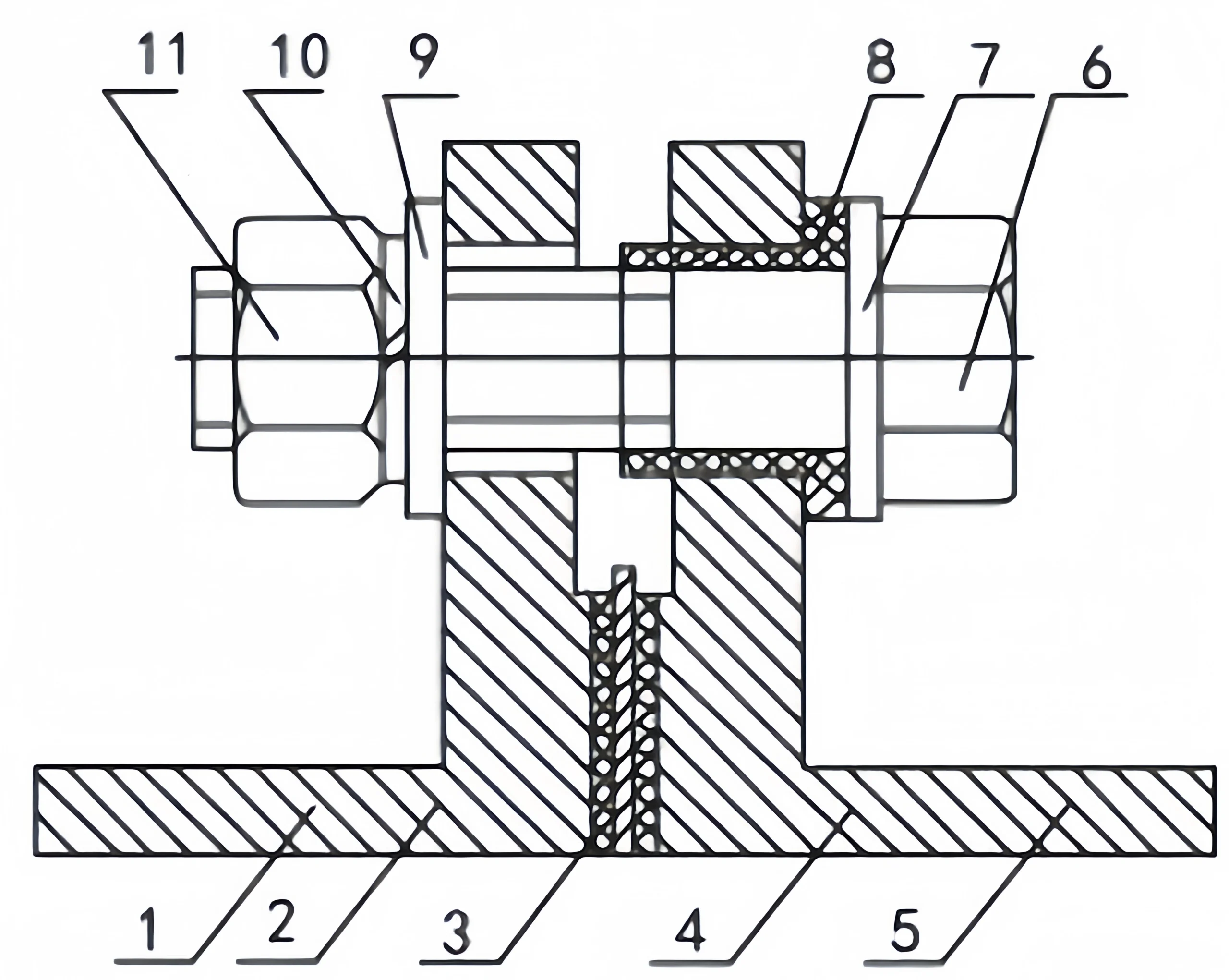
- Sensor 2. Lining (PTFE or F46) 3. Grounding ring 4. Insulating gasket 5. Pipe 6. Bolt 7. Washer 8. isolating bushing 9. Flat washer 10. Spring washer 11. Nut
Transport the Magnetic Flow Meter

Precautions for Installing the Magnetic Flow Meter
a. The installation dimensions must be calculated accurately. Otherwise, it is easy to leak or fail to install.
b. The flow direction of the fluid must be consistent with the flow direction arrow on the sensor body.
c. The electrode axis of the flow meter must be approximately horizontal. Otherwise, it will affect the measurement accuracy.
d. The flanges on both sides of the sensor must be kept parallel. Otherwise, it is easy to leak.
e. To avoid the formation of vortex flow after installation. It should be ensured that the process piping and the coaxial connection of the flow meter cannot be staggered.
f. When installing the flow meter, it is strictly forbidden to weld close to the flow meter flange. Avoid burning the flow meter lining.
g. For process pipelines of different properties, the corresponding grounding method should be adopted (see sensor grounding)
h. For corrosive media, it is best to install it vertically, and the measured medium flows from bottom to top. Avoid the deposition of solid particles in the flow meter tube, make the lining corrode evenly, and extend the service life.
i. For measuring tubes with a diameter greater than 200mm, a telescopic head can be used for easy installation.
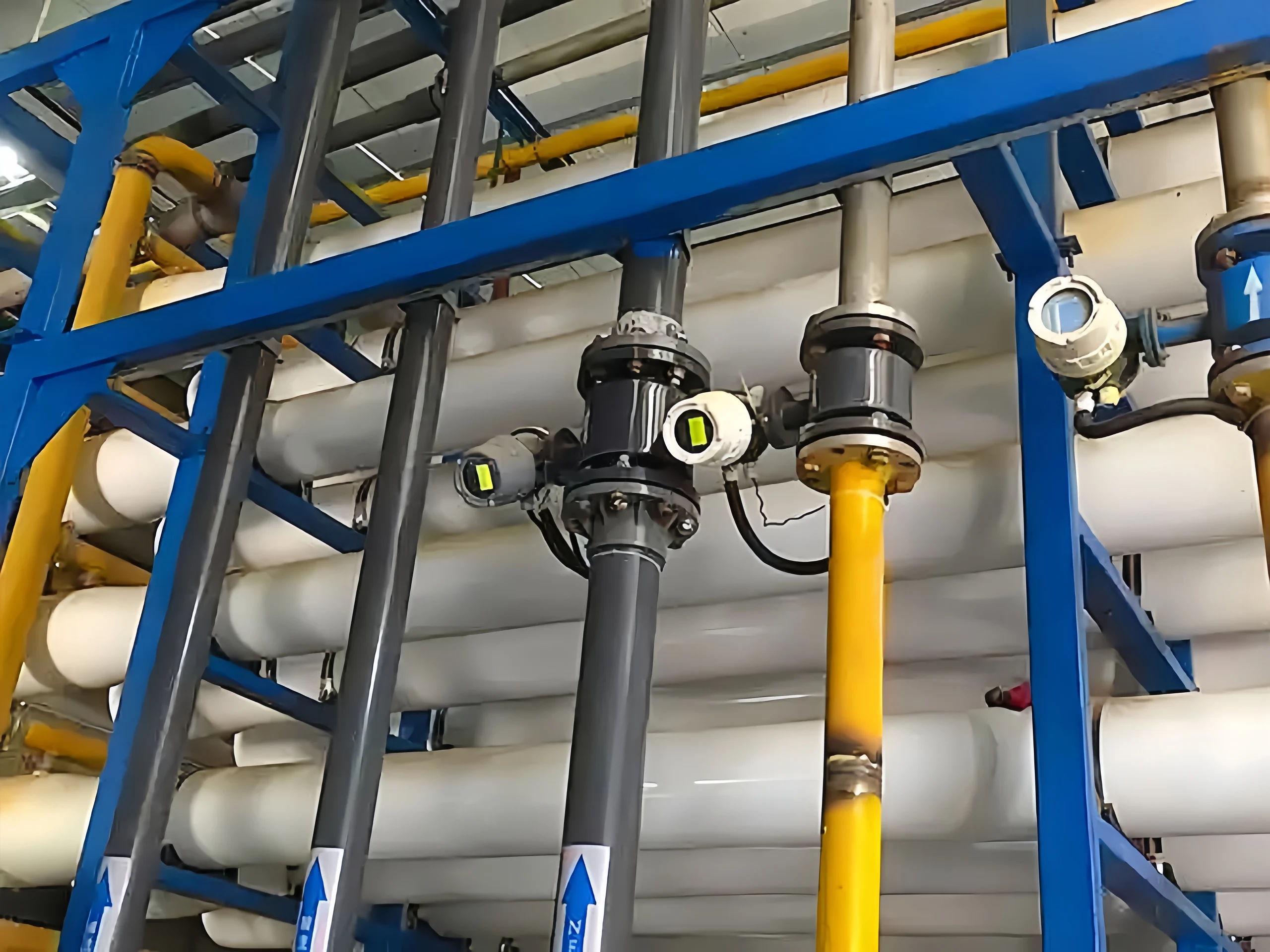
Why are Straight Pipe Runs for Flow Meters Necessary?
The role of straight pipe runs is mainly reflected in the following aspects:
1. Stabilize fluid flow
When the fluid flows in the pipeline, it will be affected by various factors and produce instability. such as pipe bending, valve switching, pump operation, etc.
These unstable factors will cause uneven distribution of fluid velocity, vortex and turbulence, etc., thus affecting the measurement accuracy of the flow meter.
The straight pipe section can provide a certain buffering effect through its length. so that the fluid can tend to be stable after flowing through the straight pipe section. Reducing the impact of instability on the measurement.
2. Reduce fluid disturbance
To the above-mentioned unstable factors, the fluid in the pipeline may also be affected by other disturbances, such as the roughness of the inner wall of the pipeline, impurities in the fluid, etc.
These disturbances will also affect the measurement of fluid velocity. The straight pipe section can reduce the impact of these disturbances through its length and the smoothness of the inner wall. So that the fluid can maintain a more stable state after flowing through the straight pipe section.
3. Ensure measurement accuracy
The measurement accuracy of the flow meter is one of its most basic requirements. The setting of the straight pipe section can ensure that the fluid is in a relatively stable state before flowing through the flow meter.
At the same time, the straight pipe section can also reduce the errors caused by factors such as improper installation position or unreasonable pipeline layout.
4. Protect the flow meter
As a precision measuring instrument, the internal structure and components of the flow meter need to be well protected. The setting of the straight pipe section can reduce the direct impact and wear of the fluid on the flow meter. And extend the service life of the flow
meter. In addition, the straight pipe section can also prevent malfunctions and damage caused by impurities blocking the flow meter in the pipeline.
Magnetic Flow Meter Selection Guide
A magnetic flow meter is a commonly used industrial instrument. It widely used in the electronics semiconductor industry.
Choosing a suitable magnetic flow meter can ensure the accuracy and efficiency of the production process. The following are the factors:
1. Measurement requirements
It is necessary to determine the type of fluid to be measured, flow range, temperature, pressure and other parameters. Ensure that the selected magnetic flow meter meets the actual measurement requirements.
2. Accuracy requirements
Determine the accuracy level of the magnetic flow meter according to the requirements of the production process. It can usually be divided into 0.5 level, level, 1.5 level, etc.
And the selection needs to be made according to specific needs.
3. Material selection
Choose the appropriate magnetic flow meter material according to the corrosiveness and temperature requirements. Common materials include stainless steel, PVC, PTFE, etc.
4. Output signal
Consider the output signal type of the magnetic flow meter, which generally includes analog signals (4-20mA, 0-10V) and digital communication interfaces (Modbus, HART, etc.). And choose the output signal type that suits your system.
5. Installation method
Choose the appropriate installation method according to the actual situation of the production site, which can be flange connection, plug-in installation or clamping installation, etc.
Ensure that the installation method is convenient, fast and accurate.
6. Brand reputation
Choose a magnetic flow meter from a well-known brand. Ensure product quality and after-sales service. It is recommended to learn more about the brand and its reputation on the market before purchasing. Sino-Inst is a flow meter supplier from China. Although we are not as famous as the big brands, our products have a high cost performance. Our products have perfect after-sales service. You can choose us with confidence.
7. Price comparison
On the premise of meeting performance requirements, you can obtain quotations through multiple channels and compare prices to obtain the most cost-effective magnetic flow meter.
Choosing a suitable magnetic flow meter requires considering multiple factors. Only by comprehensively considering various indicators can you choose the product that best suits your application scenario.
What is the Minimum Straight Length for a Flow Meter?
Mass flow meter, volumetric flow meter:
No specific requirements.
The upstream straight pipe section is not less than 0 to 5 times the pipe diameter, and there is no requirement for the downstream.
upstream straight pipe section is not less than 5 times the pipe diameter, and downstream is not less than 3 times the pipe diameter;
upstream straight pipe section is not less than 5 to 20 times the pipe diameter, and downstream is not less than 3 to 10 times the pipe diameter;
upstream straight pipe section is not less than 10 to 40 times the pipe diameter, and downstream is not less than 5 times the pipe diameter;
upstream straight pipe section is not less than 5 to 10 times the pipe diameter, and downstream is not less than 0 to 5 times the pipe diameter;
The upstream straight pipe section is not less than 10 to 50 times the pipe diameter, and the downstream is not less than 5 times the pipe diameter.
The magnetic flow meter installation is a very complicated issue. If you encounter any problems during the installation process. Please feel free to contact us. Our professional engineers will solve the relevant problems for you.
Sino-Inst has more than 20 years of experience in flow measurement. Our products have been well-received by users around the world. If you need to buy a flow meter, you can choose us. Sino-Inst is your best flow measurement partner.

